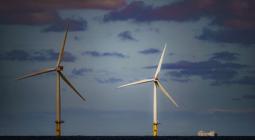Subsea cables to help Britain meet green energy goal get green light
Ofgem gives green light to five interconnectors capable of powering millions of homes
Projects to lay five subsea power cables capable of powering millions of homes have been given the green light as Great Britain prepares to use its giant offshore windfarms to become a net exporter of green electricity in the 2030s.
The energy regulator, Ofgem, has approved three subsea cable projects linking Great Britain to power grids in Germany, Ireland and Northern Ireland to help share renewable electricity across borders.
Ofgem has also agreed to plans for new cables to connect Britain to offshore windfarms in Dutch and Belgian waters.
The high voltage power cables, known as interconnectors, are considered a crucial part of the Labour government’s plan to create a clean power system by 2030, and become a net exporter of green electricity in the decades ahead.
Currently, Great Britain has interconnectors with a combined capacity of 11.7 gigawatts already operating or under construction, or enough to meet the power needs of more than 11m UK homes. The new projects will take this total to 12GW in 2030 as the projects begin to operate, before reaching 18GW by 2032.
The new power cable projects will move ahead a week after the National Energy System Operator said Britain could become a net exporter of green electricity by the end of the decade at no extra cost to the energy system if ministers take urgent steps to tackle the UK’s sluggish regulation and planning procedures.
Akshay Kaul, the Ofgem infrastructure director, said the project, which will be paid for through energy bills, were carefully assessed so that only those which will “deliver for consumers in terms of value, viability and energy security” were approved.
“As we shift to a clean power system more reliant on intermittent wind and solar energy, these new connections will help harness the vast potential of the North Sea and play a key role in making our energy supply cheaper and less reliant on volatile foreign gas markets and associated price spikes,” Kaul said.
Kaul added that the new cables would also provide greater access to energy imports to “provide vital backup energy sources when renewable generation is more limited here”.
Cover photo: Gwynt y Mor, the world’s second largest offshore wind farm located eight miles off the coast of North Wales. Photograph: Ben Birchall/PA




